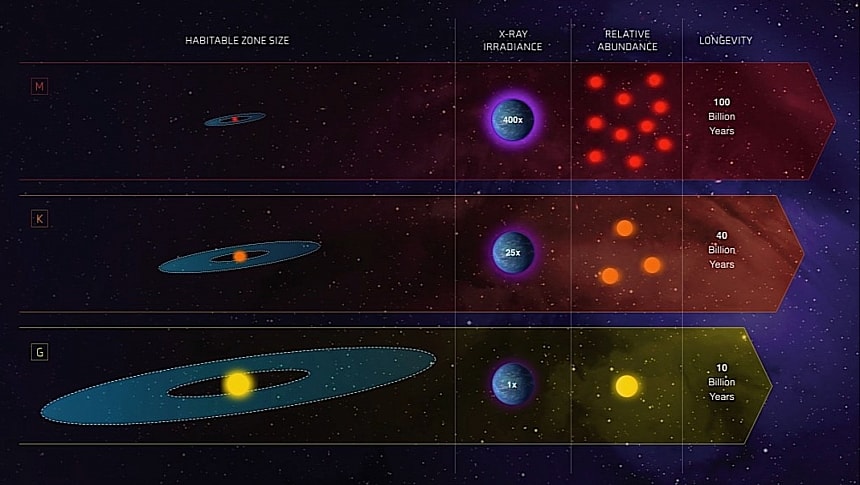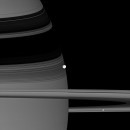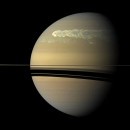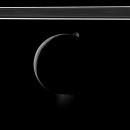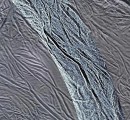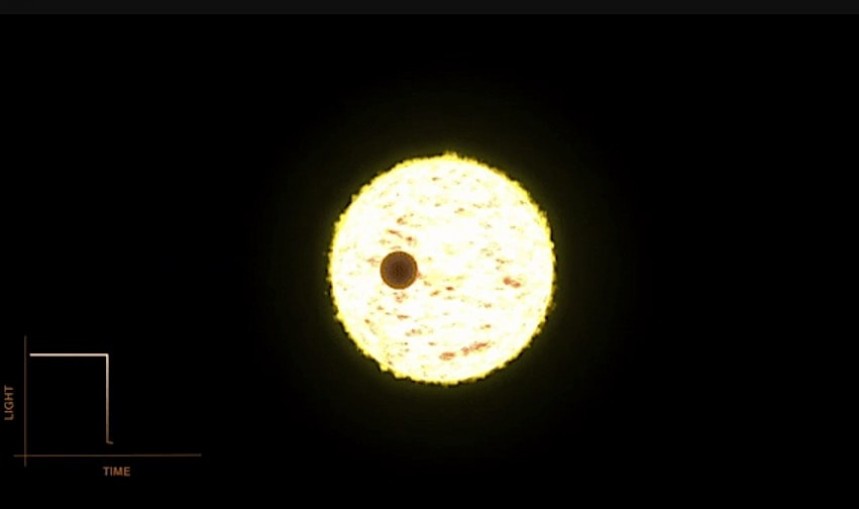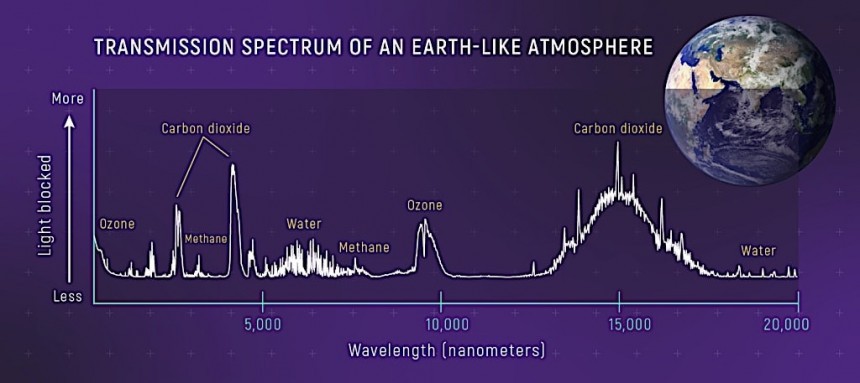At the end of 2021 humanity launched into a distant orbit the most technologically advanced (and expensive) space telescope ever made. Now parked at the second Sun-Earth Lagrange point (L2) in the solar system, one million miles (1.5 million km) from home, the hardware is about to give us the first palpable results of its most exciting mission yet: looking at potentially habitable worlds outside our solar system. But not as soon as we might like.
We now know that planets are quite common in the Milky Way galaxy. Most of them have conditions that are simply too vicious to support life as we know it, but there are plenty of them that we know to inhabit the so-called Goldilocks Zone.
That's an area within a solar system far away enough from the star for a planet the size of Earth to support the existence of liquid water, a crucial element for life to exist in the form we know of here in our little corner of the galaxy.
Our species knows so far of around 30 such planets, and in the years it has been in space, the Webb was trained on a bunch of them several times. The data it sent back didn't reveal the existence of living aliens in any way, but that's only because scientists are still busy going through it all.
The telescope is uniquely equipped for the task of finding alien life, if there is any. It can pick traces of water vapor, methane, and carbon dioxide, all of which can help or are the result of life.
The planets Webb has been looking at are called transiting exoplanets. What that means is they have an orbit that places them in front of their star in relation to the telescope's position in space. Whenever that happens, the device conducts something called transmission spectroscopy, looking at starlight filtered through the atmospheres of the target planets to determine their composition.
That sounds pretty easy and straightforward, but it actually is not. As per Knicole Colón and Christopher Stark, Webb project scientists at NASA's Goddard Space Flight Center, even simply detecting the existence of an atmosphere around a Goldilocks planet is pretty difficult, let alone determining if water vapor is present, or if gases produced through biological processes (biosignatures) of any kind are present.
Of the undisclosed number of planets Webb has been looking at, only a handful can be seen by the telescope in such a way as to allow their atmospheres to be analyzed. The list includes LHS 1140 b and TRAPPIST-1 e.
Both are part of a longer list of some 17 planets NASA already said they may hide habitable oceans, but getting to the bottom of their mysteries is not an easy task.
As if the galaxy itself opposes Webb's search for aliens, the location of these planets' systems allows for observations to be made at a rate that would require close to a decade to collect enough meaningful data.
Even if this hurdle is somehow overcome, clouds or hazes in the planets' own atmospheres are making the search for signals a living hell. Then, the fact that stars themselves can show signs of water vapor in their spots makes it pretty hard for humans to determine if said vapor is coming from a planet or a sun.
And to top it all off, "these biosignature gases also tend to overlap with other expected atmospheric signals so distinguishing between the various signals," creating yet another challenge.
Even if despite all of the above you still feel hopeful about our species detecting signs of life on another world sometime soon, NASA scientists said you should slow down a bit. They say that the "detection of a single biosignature by any means does not constitute discovery of life."
For such a situation to be declared, scientists say they would need a huge amount of detected biosignatures, data collected not by one but by multiple telescopes and observatories, and atmospheric modeling. All of that, we're told, will probably take years, so even if something is discovered tomorrow, a lot of time will pass until it's confirmed.
But, at least, we're getting there. Webb is already in space, actively looking for the answer to the question "are we alone?", and another very potent telescope, the Nancy Grace Roman, will soon join it (launch is scheduled for 2027).
To give you an idea of how serious NASA is about finding life out there, a dedicated telescope called Habitable Worlds Observatory (HWO) is being considered with a potential launch date in the 2040s.
By all accounts, the HWO will be the first-ever tool dedicated to "directly image and search for chemical traces caused by life on Earth-like planets around Sun-like stars." It will specifically target 25 potentially habitable worlds, using spectroscopy with "unprecedented sensitivity and resolution" to look for biosignatures.
That's an area within a solar system far away enough from the star for a planet the size of Earth to support the existence of liquid water, a crucial element for life to exist in the form we know of here in our little corner of the galaxy.
Our species knows so far of around 30 such planets, and in the years it has been in space, the Webb was trained on a bunch of them several times. The data it sent back didn't reveal the existence of living aliens in any way, but that's only because scientists are still busy going through it all.
The telescope is uniquely equipped for the task of finding alien life, if there is any. It can pick traces of water vapor, methane, and carbon dioxide, all of which can help or are the result of life.
The planets Webb has been looking at are called transiting exoplanets. What that means is they have an orbit that places them in front of their star in relation to the telescope's position in space. Whenever that happens, the device conducts something called transmission spectroscopy, looking at starlight filtered through the atmospheres of the target planets to determine their composition.
Of the undisclosed number of planets Webb has been looking at, only a handful can be seen by the telescope in such a way as to allow their atmospheres to be analyzed. The list includes LHS 1140 b and TRAPPIST-1 e.
Both are part of a longer list of some 17 planets NASA already said they may hide habitable oceans, but getting to the bottom of their mysteries is not an easy task.
As if the galaxy itself opposes Webb's search for aliens, the location of these planets' systems allows for observations to be made at a rate that would require close to a decade to collect enough meaningful data.
Even if this hurdle is somehow overcome, clouds or hazes in the planets' own atmospheres are making the search for signals a living hell. Then, the fact that stars themselves can show signs of water vapor in their spots makes it pretty hard for humans to determine if said vapor is coming from a planet or a sun.
And to top it all off, "these biosignature gases also tend to overlap with other expected atmospheric signals so distinguishing between the various signals," creating yet another challenge.
For such a situation to be declared, scientists say they would need a huge amount of detected biosignatures, data collected not by one but by multiple telescopes and observatories, and atmospheric modeling. All of that, we're told, will probably take years, so even if something is discovered tomorrow, a lot of time will pass until it's confirmed.
But, at least, we're getting there. Webb is already in space, actively looking for the answer to the question "are we alone?", and another very potent telescope, the Nancy Grace Roman, will soon join it (launch is scheduled for 2027).
To give you an idea of how serious NASA is about finding life out there, a dedicated telescope called Habitable Worlds Observatory (HWO) is being considered with a potential launch date in the 2040s.
By all accounts, the HWO will be the first-ever tool dedicated to "directly image and search for chemical traces caused by life on Earth-like planets around Sun-like stars." It will specifically target 25 potentially habitable worlds, using spectroscopy with "unprecedented sensitivity and resolution" to look for biosignatures.
